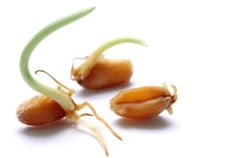Manitoba is taking a new approach to water management.
As of Jan. 1, the province has 14 watershed districts, which will replace 18 conversation districts.
The new boundaries are based on watersheds, creating districts with similar drainage patterns.
“Our government recognizes the importance of local decision-making around water and we want to build on the success of the conservation districts model to advance watershed management in our province,” said agriculture and resource development minister, Blaine Pedersen.
The watershed districts will be operated as a partnership, between the province and municipal governments, to protect and manage land and water resources within the district.
Read Also

Manitoba community projects get support from HyLife
HyLife Fun Days 2025 donated $35,000 each to recreation and housing projects in Killarney, Steinach and Neepawa earlier this fall.
The watershed districts have also been renamed to reflect the change in boundaries.
The modernization is part of new strategy to manage water in Manitoba.
In 2019, Manitoba introduced a program called Growing Outcome in Watersheds (GROW).
Last spring, Manitoba Premier Brian Pallister invested $52 million into GROW to establish an endowment fund.
The GROW program is similar to the Alternative Land Use Services (ALUS) model that exists in Prince Edward Island and a number of municipalities in Ontario and Western Canada.
The fund will be used to pay farmers for ecosystem services like preserving wetlands, giving landowners a financial incentive to conserve habitat.
The watershed districts will manage GROW, at a local level with local committees that include representation from agricultural producers, watershed district members, technical experts and other partners.
In addition to GROW, Manitoba’s Progressive Conservative government changed the province’s wetlands policy in 2019.
The province updated the Water Rights Act regulations, streamlining the approval process for draining small and temporary wetlands.
As part of the changes, Manitoba adopted a “no net loss” approach to wetlands.
Landowners who drain a wetland will have to compensate the province or mitigate the loss of the wetlands. They could pay for the construction of a similar wetland or establish a new slough on their own property.
However, the government decided that landowners cannot drain Class 4 or 5 wetlands. Those are sloughs that have semi-permanent or permanent ponds.
There were many changes to Manitoba’s water policy in 2019, but some conservation groups have praised the new approach.
Manitoba has found a middle ground with wetlands, devising a policy that is part carrot and part stick, said Ducks Unlimited Canada.
“I think the Tories do deserve some credit for digging into this issue … and coming out with what we think is a pretty fair and balanced approach,” said Scott Stephens, director of regional operations for DUC, back in October.
“I think (this is) probably one of those situations where they are probably in the right place.”
















